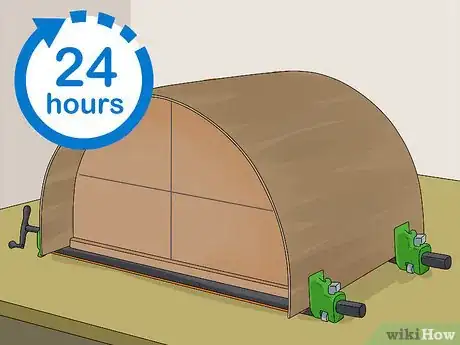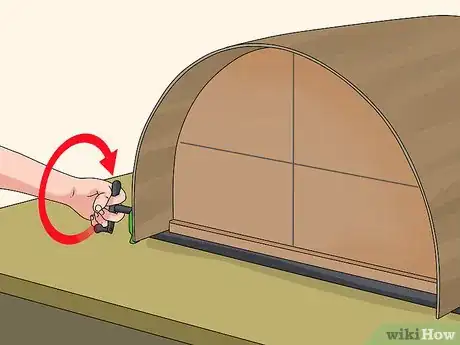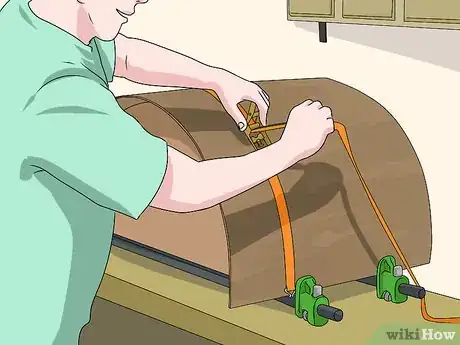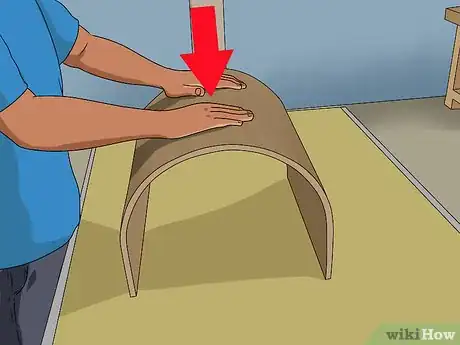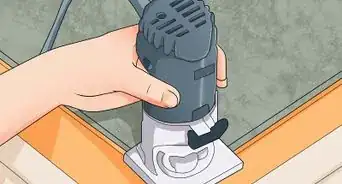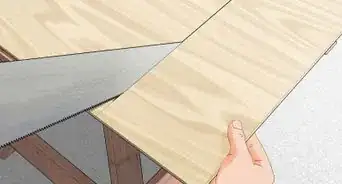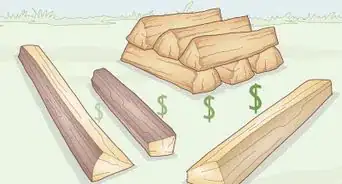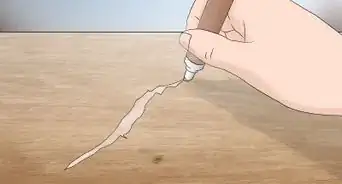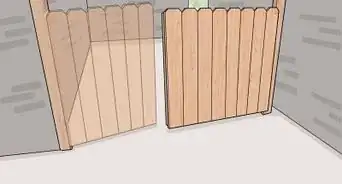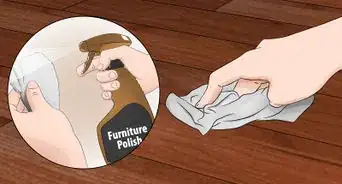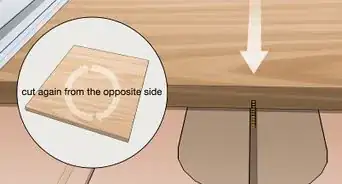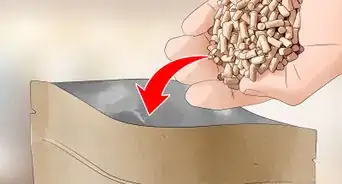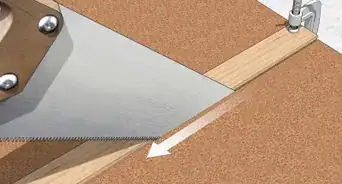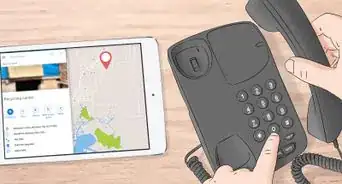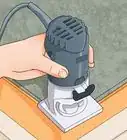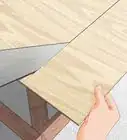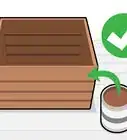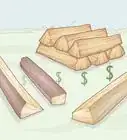This article was co-authored by Ryaan Tuttle and by wikiHow staff writer, Kyle Hall. Ryaan Tuttle is a Home Improvement Specialist and the CEO of Best Handyman, Inc. in Boston, Massachusetts. With over 17 years of experience, he specializes in building home service businesses, focusing on creating scalable and efficient brands. With the help of his global team, the companies have achieved over 10+ million in sales and received recognition through magazine features, and enjoy partnerships with wikiHow and Jobber field service software. Boston Magazine and LocalBest.com have named Best Handyman Boston the Best Handyman in Boston. Ryaan holds Construction Supervisor and Home Improvement Contractor Licenses.
wikiHow marks an article as reader-approved once it receives enough positive feedback. In this case, several readers have written to tell us that this article was helpful to them, earning it our reader-approved status.
This article has been viewed 544,190 times.
Bent plywood can be used to give furniture and cabinetry a sleek, seamless appearance. The easiest way to bend plywood at home is using clamps and a form made out of medium density fiberboard, or by using a ratchet strap. For a stronger, sturdier bend, you may want to glue multiple pieces of plywood together so the piece you’re bending is thicker. Whichever method you use, it’s important you give the plywood enough time to bend.
Steps
Bending Plywood with a Form
-
1Create a form out of MDF (medium density fiberboard). Use a pencil to draw the shape of the curve you want to bend the plywood to on a piece of MDF. Cut out the shape using a bandsaw. Trace the shape onto more MDF and cut out more layers for the form. You want enough layers that the height of the form is about the same as the width of the plywood you’re trying to bend. Glue the layers of MDF together to complete the form.[1]
- You can find medium density fiberboard at your local hardware store.
- Always wear protective eyewear when using a bandsaw.
- You can even use a jigsaw to cut it.[2]
-
2Clamp the plywood to the form using bar clamps. Place the piece of plywood next to the curved side of the form. Place one end of a bar clamp on the far side of the form, and the other end of the clamp on the outside-facing part of the plywood directly across from it. Spin the handle on the clamp clockwise to tighten the plywood into place against the form. Continue adding clamps to the plywood until it’s completely clamped along the curved side of the form.[3]
- Make sure you clamp the ends and middle of the plywood you’re bending.
- If you see gaps between the plywood and the curved side of the form, tighten a clamp over them.
Advertisement -
3Leave the plywood clamped to the form overnight. This will give the plywood enough time to bend under the pressure of the clamps. Don't rush this step; if you take the clamps off early the plywood may not hold its curve.[4]
-
4Unclamp the plywood from the form. Twist the handles on the bar clamps counterclockwise to loosen and remove them. Once all the clamps are off, remove the plywood from the side of the form.[5]
-
5Use your hands to test the bent plywood. Try gently bending the ends of the plywood to see if it straightens out or holds its curve. Turn the plywood upside down so it’s resting on the ends and push down on the center of the curve with your hand. If the curve doesn’t hold, re-clamp the plywood to the MDF form.
- If you still can’t get the bend to hold, try gluing additional layers of plywood over your original piece and re-clamping it to the form. Making the plywood thicker will help it bend more easily.[6]
Using a Ratchet Strap
-
1Get a ratchet strap with S-hooks. A ratchet strap, also known as a tie-down strap, is a nylon strap with a hook on each end. There’s a ratchet in the middle of the strap you can use to tighten the strap. Make sure the strap you get has S-hooks so it’s able to hook onto the plywood.[7]
- You can find a ratchet strap online or at your local hardware store.
- Read the label to see if the ratchet strap has S-hooks.
-
2Hook the S-hooks to opposite ends of the plywood. Center the hooks on the end they’re hooked onto. Do this with the piece of plywood lying flat so the S-hooks don’t slide off. Once the hooks are on, the ratchet strap should run down the center of the plywood, with the ratchet somewhere between the 2 hooks.[8]
- You may need to thread the strap attached to one of the hooks through the ratchet so both sides of the strap are connected.
-
3Use the ratchet to tighten the strap until the plywood is bent how you want it. To tighten the strap with the ratchet, bring the handle of the ratchet up and down repeatedly. Each time you lift up the ratchet, it will pull in some of the slack. Continue lifting and lowering the handle on the ratchet until the plywood is bent to your desired curve.[9]
-
4Leave the ratchet strap on the plywood overnight. After you’ve let the plywood sit overnight, remove the ratchet strap. To remove the strap, lift the handle on the ratchet and pull it all the way back so it’s flat on the strap. You should hear a clicking noise and the ratchet should stay open. Remove the S-hooks from the ends of the plywood.[10]
-
5Test the bent plywood. Place the bent plywood on a flat surface so it’s resting on the ends. Apply pressure to the center of the curve with your hands to see if the plywood straightens out. If the curve doesn’t hold, re-attach the ratchet strap and let the plywood sit for longer. You can also glue additional layers of plywood to the curved plywood, using clamps to hold them in place. The more layers there are, the stronger the plywood curve will be.
Community Q&A
-
QuestionIs laminated plywood strong enough for the rockers of a rocking chair?
 Community AnswerIt depends on orientation. If you cut five identical, long, curved shapes from a piece of 3/4 inch plywood, and glue them together, you will have a very stout roller/rocker leg.
Community AnswerIt depends on orientation. If you cut five identical, long, curved shapes from a piece of 3/4 inch plywood, and glue them together, you will have a very stout roller/rocker leg. -
QuestionWhat method would be most responsible for a skateboard ramp?
 Community AnswerChoose a thin and bendable wood, usually 1/8 Baltic birch ply, and screw it down to a form, usually 2x4s because they're cheap. The bend on a ramp usually isn't very severe since it is usually at least at waist height (let's say 36 inches). That height is the bending radius and usually plywood of that thickness can bend considerably more tight (up to 24 pretty easily but sometimes much more).
Community AnswerChoose a thin and bendable wood, usually 1/8 Baltic birch ply, and screw it down to a form, usually 2x4s because they're cheap. The bend on a ramp usually isn't very severe since it is usually at least at waist height (let's say 36 inches). That height is the bending radius and usually plywood of that thickness can bend considerably more tight (up to 24 pretty easily but sometimes much more). -
QuestionHow do I bend walnut wood?
 Community AnswerKerf bending works well with walnut where the inside radius is hidden and you have a curved frame to glue it to. You also can steam bend if the inside radius will show.
Community AnswerKerf bending works well with walnut where the inside radius is hidden and you have a curved frame to glue it to. You also can steam bend if the inside radius will show.
Things You’ll Need
Bending Plywood with a Form
- Plywood
- MDF
- Wood glue
- Bar clamps
- Bandsaw
Using a Ratchet Strap
- Plywood
- Ratchet strap with S-hooks
References
- ↑ https://www.youtube.com/watch
- ↑ https://www.woodworkhubby.com/can-you-cut-mdf-with-a-jigsaw/
- ↑ https://www.youtube.com/watch
- ↑ https://www.youtube.com/watch
- ↑ https://www.youtube.com/watch
- ↑ https://www.youtube.com/watch
- ↑ https://www.youtube.com/watch
- ↑ https://www.youtube.com/watch
- ↑ https://www.youtube.com/watch
About This Article
To bend plywood, start by creating a form out of medium density fiberboard that has the curve you want to bend the plywood to. Then, clamp the plywood to the form using bar clamps and leave it overnight. Next, unclamp the plywood from the form and try bending it to see if it holds its curve. If it doesn't, try re-clamping it to the form and leaving it on for another night, or until the curve holds. To learn how to bend plywood using ratchet straps, scroll down!


